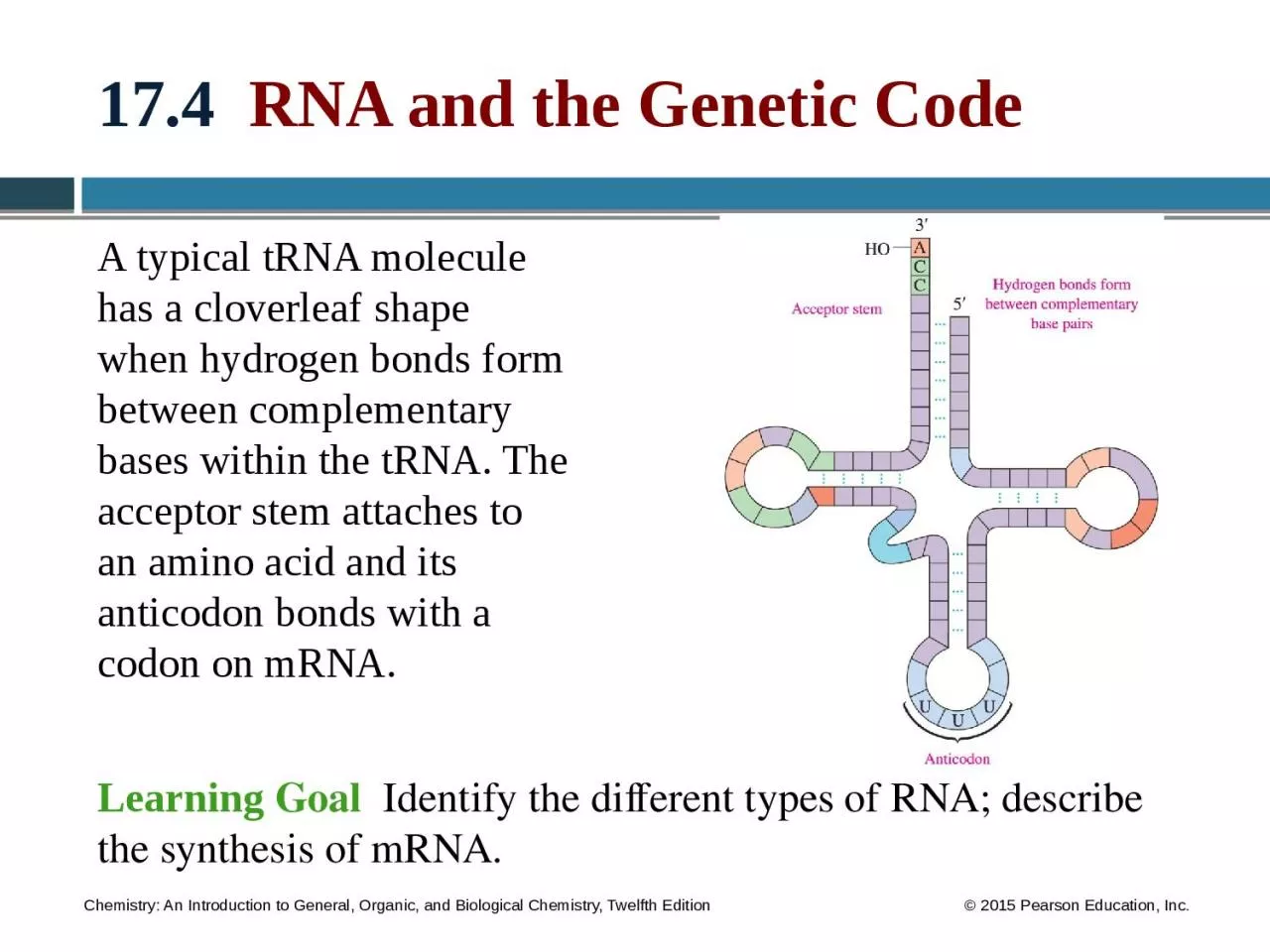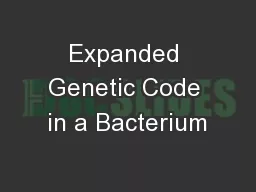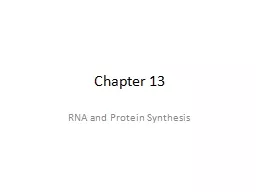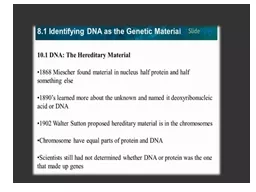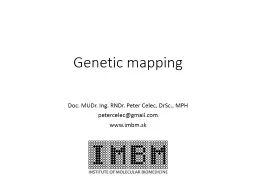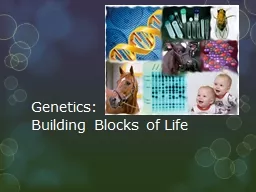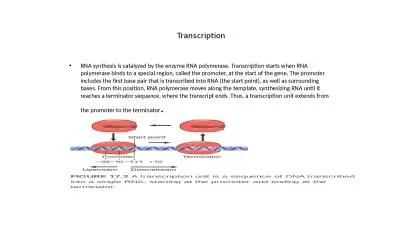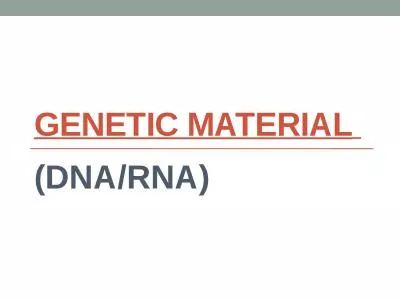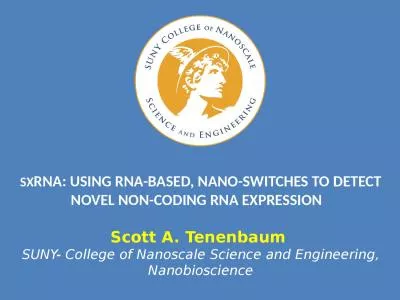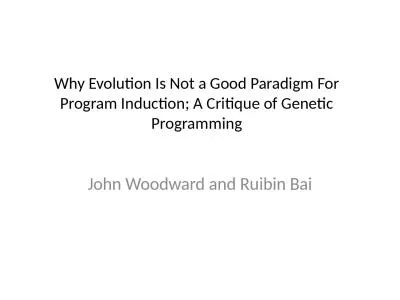PPT-17.4 RNA and the Genetic Code
Author : catherine | Published Date : 2023-11-17
A typical tRNA molecule has a cloverleaf shape when hydrogen bonds form between complementary bases within the tRNA The acceptor stem attaches to an amino acid and
Presentation Embed Code
Download Presentation
Download Presentation The PPT/PDF document "17.4 RNA and the Genetic Code" is the property of its rightful owner. Permission is granted to download and print the materials on this website for personal, non-commercial use only, and to display it on your personal computer provided you do not modify the materials and that you retain all copyright notices contained in the materials. By downloading content from our website, you accept the terms of this agreement.
17.4 RNA and the Genetic Code: Transcript
Download Rules Of Document
"17.4 RNA and the Genetic Code"The content belongs to its owner. You may download and print it for personal use, without modification, and keep all copyright notices. By downloading, you agree to these terms.
Related Documents

